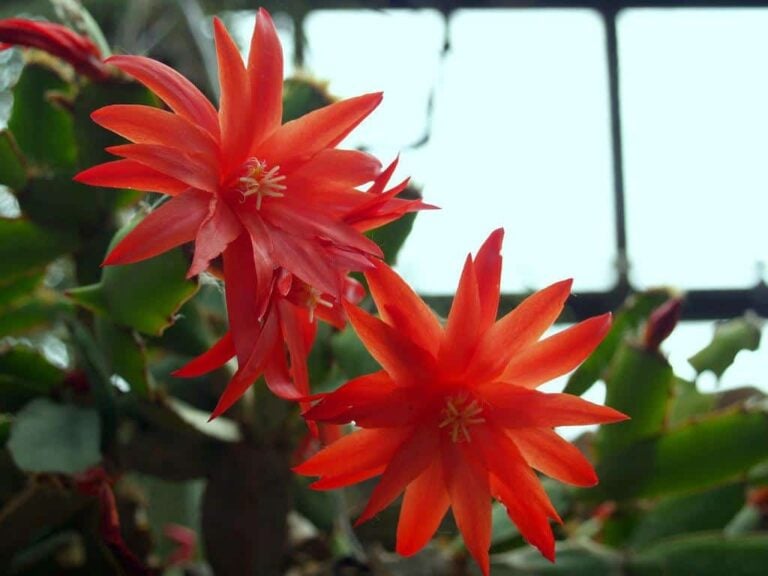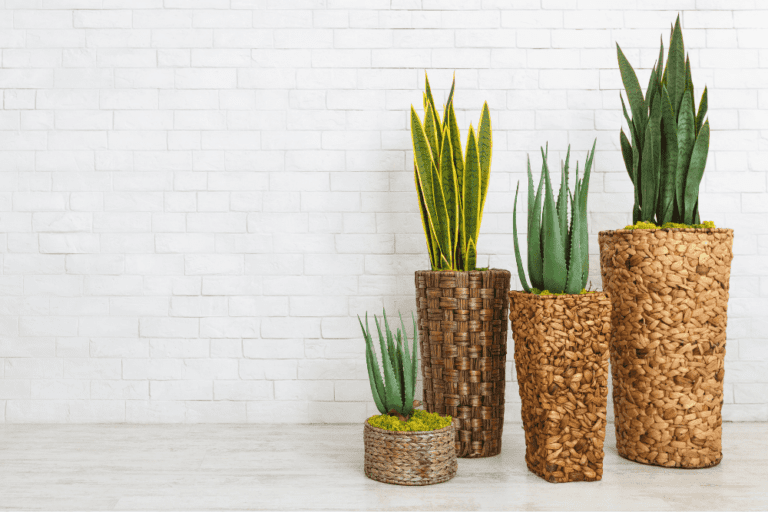Brighten Your Home with the Barberton Daisy
The Barbeton daisy takes this ordinary plant to the next level with a plant with showy blooms that provide welcome color throughout the growing season. It is low maintenance with a few special considerations for its needs. With the proper care, you’ll enjoy a plant that can act as an eye-catching focal point. Continue reading to learn more about this delightful plant.
What Is the Barbeton Daisy?
If you think all daisies are white and diminutive, you’ll be in for a surprise with the Barbeton daisy (Gerbera jamesonii). It is a sub-tropical plant that grows in South Africa. The name Barbeton is a reference to the region where it was found. The species name, jamesonii, is the name of the person who described it formally, Robert Jameson. It’s science’s version of first dibs.
The Barbeton daisy can reach heights up to two feet tall. While it comes in white, you’ll also find it in yellow, orange, red, and pink. As with many landscaping plants, there are many hybrids. It is a member of the Asteraceae or Compositae Family, also known as the Daisy or Composite Family. The group is one of the largest plant families in the world.
Planting Barbeton Daisy
You can grow this plant as a perennial if you live in the warmer USDA Hardiness Zones 9 to 11. You can still grow it as an annual if you live somewhere else. You can bring it inside for the winter and hope for the best next year. It doesn’t tolerate frost well. An extreme low temperature of 20 degrees Fahrenheit is about the limit for what it can handle.
Care and Maintenance
The Barbeton daisy, also known as the Transvaal or Gerbera daisy, is a hardy plant that is easy to grow. We always like to hear that about an indoor or garden plant. As a composite, the large visible part of the plant is the flowerhead. If you look close, there are numerous smaller flowers called ray florets within it. Hence, it’s is a composite flower.
Light and Temperature
It prefers full sun but will tolerate some shade. Of course, growing it in full sun will give you the most blooms as it will flower throughout the season. If you have them indoors, place them on a sunny windowsill that gets direct sun for the best success. Average household temperatures will suit the Barbeton daisy just fine. Growth may slow during the cooler months of the year.
Moisture
To understand its moisture needs, it helps to know what the situation is for this plant in its native habitat. It lives in mountainous areas with sandy soils that are well-draining. That should tell you right there that the Barbeton daisy won’t tolerate soggy soils. Root and crown rot may become an issue. You should allow the soil to dry a bit between waterings.
Soil Conditions and Fertilizing
So, you know the Barbeton daisy needs sandy soils. If you’re planting it as a container plant, you should opt for a lightweight soil mixture. It’ll do several things to keep your plants healthy. First, there is the drainage issue. As long as your container has holes on the bottom, it’s not a problem with the right soil. Second, it’ll allow air to circulate freely around the roots to prevent rot.
The result is a plant that will flourish with the conditions it prefers. A potting mix with peat and perlite is ideal. You’ll also need to pay attention to pH, both indoors and outdoors. The Barbeton daisy likes its soil on the slightly acidic to neutral side, from 6.1 to 7.5 pH. If you’re uncertain about the conditions, run a soil test to ensure everything is right before planting.
Deadhead Spent Flowers
While it’s actively flowering, you’ll want to support this growth with a regular application of a time-release, balanced fertilizer at least once a month or even every two weeks. To keep the show going, deadhead spent flowers periodically. It’ll make your plants look better. Think of it like weeding. It will also encourage new blooms.
Flowering plants devote a lot of resources to flowering and eventually going to seed. That is their primary goal. If you prevent it from going to seed, the plant will continue to bloom. That is the way it carries on its species. It’ll keep flowering to meet that goal. That is also why it’s important to fertilize them during flowering.
This video from the Mississippi State University Extension explains how to deadhead flowers using the rose as an example.
Fitting In
If space is an issue, you can find hybrids of the Barbeton daisy that will get considerably less than its two-foot height. The plant has a lot of things the home gardener will appreciate in a landscaping plant. It is deer resistant as much as any plant can be. Remember not much will stop a hungry deer. On the plus side, it is non-toxic to cats, dogs, and horses.
It is also an excellent addition to the wildlife garden. As you may expect with such a colorful plant, it attracts bees and butterflies. The birds will like it too. And since it blooms continuously, there’ll always be some life in your garden to make it interesting.
Special Care Notes
There are a few minor things to keep in mind when growing the Barbeton daisy. We mentioned moisture requirements which can leave it vulnerable to soil diseases. Its leaves are also thin and delicate. You should take care when planting and doing routine maintenance around these plants to avoid damaging the leaves. A damaged leaf is an invitation to pests and disease.
The Barbeton daisy combines both the familiar and the exotic in a plant that is sure to become a showstopper in your garden. Whether you grow it indoors or outdoors, its vibrant colors are sure to please. The key to keeping this plant happy is proper moisture. Then, let the flowering begin!
Photo by grace_kat licensed under CC By-SA 2.0.
Also Read: Calla Lily



